 Weird Stuff
Weird Stuff  Weird Stuff
Weird Stuff  Movies and TV
Movies and TV Top 10 Ghost Adventures Episodes That Will Haunt You Forever
 Animals
Animals Ten Animals That Produce and Store Toxins in Unlikely Places
 Weird Stuff
Weird Stuff 10 Weird Things That Warp Your Sense of Time
 Miscellaneous
Miscellaneous Ten More Extremely Unexpected U.S. State “Firsts”
 Humans
Humans 10 Ideas That Scare People to Death
 Music
Music The Cursed Decade: 10 Classic Rock Stars Who Had Low Periods in the 1980s
 Health
Health 10 Crazy Ways Sleep Deprivation Can Affect You
 History
History 10 Enthralling Facts about the Field of Cloth of Gold
 Pop Culture
Pop Culture The Ten Greatest Engineers in Science Fiction History
 Weird Stuff
Weird Stuff 10 Surprising Things That Were Designed to Stop Evil Behavior
 Movies and TV
Movies and TV Top 10 Ghost Adventures Episodes That Will Haunt You Forever
 Animals
Animals Ten Animals That Produce and Store Toxins in Unlikely Places
Who's Behind Listverse?

Jamie Frater
Head Editor
Jamie founded Listverse due to an insatiable desire to share fascinating, obscure, and bizarre facts. He has been a guest speaker on numerous national radio and television stations and is a five time published author.
More About Us Weird Stuff
Weird Stuff 10 Weird Things That Warp Your Sense of Time
 Miscellaneous
Miscellaneous Ten More Extremely Unexpected U.S. State “Firsts”
 Humans
Humans 10 Ideas That Scare People to Death
 Music
Music The Cursed Decade: 10 Classic Rock Stars Who Had Low Periods in the 1980s
 Health
Health 10 Crazy Ways Sleep Deprivation Can Affect You
 History
History 10 Enthralling Facts about the Field of Cloth of Gold
 Pop Culture
Pop Culture The Ten Greatest Engineers in Science Fiction History
10 Offbeat Stories You Might Have Missed This Week (5/25/19)
With another week gone, let’s wind down and check out some of the stories that made the headlines. Click here to read about all the strange stuff that happened last week.
There is a party atmosphere to this week’s list, as we have stories on LSD, cannabis, New Coke, and ancient beer. Speaking of ancient, we also find out how scientists recovered the oldest Scandinavian DNA from a piece of very old chewing gum.
In the animal world, we learn just how involved bonobo mothers are in their sons’ sex lives, and we also read about firemen who had to fight a blaze inside a house filled with hundreds of snakes.
10 Ancient Gum Yields Ancient DNA
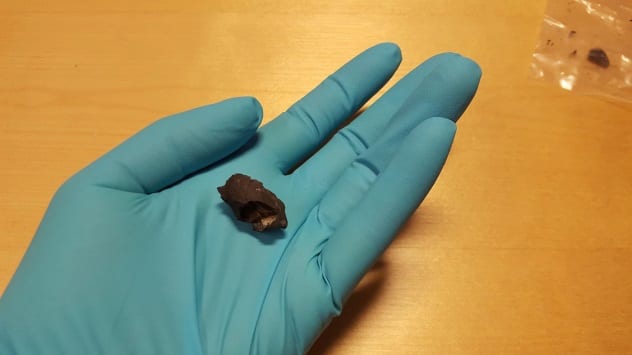
Scientists have recovered the oldest Scandinavian human DNA from 10,000-year-old chewing gum.
Huseby-Klev is an early Mesolithic village that has been excavated since the 1990s. Among the ancient items recovered at the site was a primitive form of chewing gum. It consisted of lumps of birch bark which were masticated. Eventually, they turned into a glue-like substance which was sometimes used to attach arrowheads or sword handles.
For years, the notion of retrieving DNA from the site was considered impossible because few bones were found in the village, and they were too degraded to obtain viable samples. However, two Norwegian scientists from the University of Oslo thought that the birch bark material might still contain DNA from the saliva of the people who chewed it.
They were proven right. Researchers extracted and sequenced enough DNA to show that it came from at least three people: two women and one man.[1] These people came from the south. Meanwhile, the weapons and tools they used were Russian in style. This discovery lends credence to one hypothesis that claims there are two distinct lineages to the early settlers of Scandinavia.
9 A Bonobo Mother’s Work Is Never Done
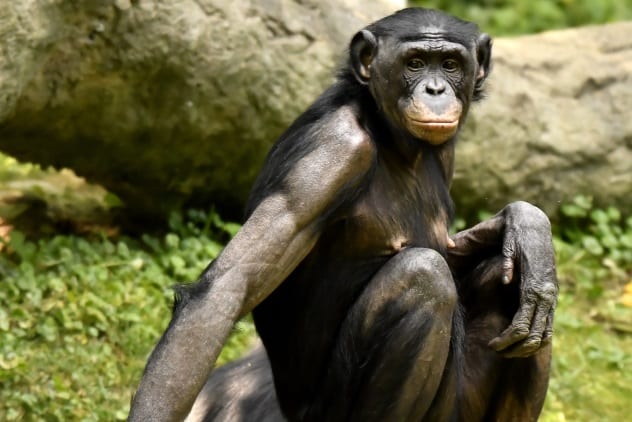
If you feel that your mother is too pushy when it comes to your love life, just be glad you’re not a bonobo. A new study by German primatologists published in Current Biology showed that male bonobos that still live with their mothers are three times more likely to have offspring than those on their own because their mothers take a very active role in their sex lives.
Bonobo society is dominated by females, so mothers of high rank are able to go to great lengths to ensure that they become grandmothers. They chaperone their sons when they are meeting females. During the act itself, they act as bodyguards and ensure that the mating couple is not disturbed by other males who might charge their sons.
The mothers are also willing to get physical in order to provide more opportunities for their offspring. They will charge at other males who are trying to woo fertile females. In rare instances, researchers reported that the high-ranking females literally dragged unrelated male bonobos off their sexual partners.[2]
A team from the Max Planck Institute for Evolutionary Anthropology in Leipzig observed wild bonobos in the Congo and compared them to chimpanzee populations in Uganda, Tanzania, and Ivory Coast. Chimp females had no apparent impact on their offspring’s reproductive success. Moreover, while bonobo mothers were active in their sons’ sex lives, the same was not true for daughters. However, bonobo females typically leave to start their own group.
8 New Kilo On The Block

After 130 years, there is a new definition for the kilogram. From now on, the unit of measurement will no longer be based on a “prototype kilogram” stored in France but on a fundamental figure in physics called the Planck constant.
For over a century, the kilogram was defined by an actual piece of shiny metal dubbed “Le Grand K,” which was stored in a vault in Sevres. However, despite our best efforts, the prototype did not remain completely unchanged. Repeated cleanings and exposure to air caused Le Grand K to lose around 50 micrograms. That’s why at an international conference last November, representatives from 60 countries voted to change the definition to something truly universal and stable.
The new standard went into effect this Monday.[3] From now on, the kilogram will be defined using Planck’s constant and measured using an extremely sensitive instrument called a Kibble balance. Modern definitions for other units also went into effect, such as the Kelvin, the mole, and the ampere.
7 Snake House
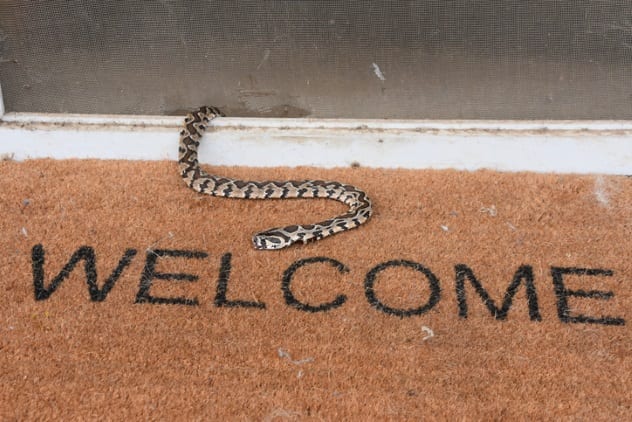
What is scarier than a house filled with snakes? The answer is a house filled with snakes that is on fire.
That was the scenario that a group of firefighters from Arizona faced this week.[4] They had to fight a blaze which engulfed a building that was home to hundreds of snakes and other reptiles. Phoenix fire captain Greg Hawk said the whole experience will leave a memorable mark and that it was “outside-of-the-box crazy.”
Because of the unusual nature of the event, firemen decided to fight the fire from the inside instead of the outside. This way, they could save as many animals as possible. Some of them were dousing the flames with water, while others were next to them, wrangling snakes into buckets.
All of the reptiles that survived the blaze were taken in by the Phoenix Herpetological Sanctuary. In addition to the scaly critters, firefighters also rescued a couple of dogs and cats.
6 New New Coke
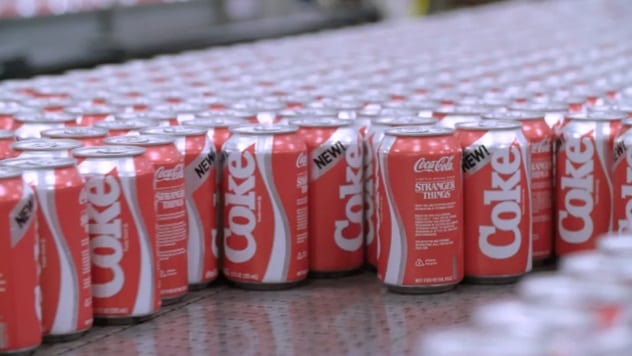
One of the biggest marketing flops in history is going to get a second chance, as Coca-Cola is bringing back New Coke after 34 years.
Back in 1985, the soft drink giant changed the formula of its flagship drink. People hated it, though, and just three months after New Coke was introduced, the old version was brought back as “Coca-Cola Classic.” The response was so negative that, even to this day, some believe New Coke was intentionally bad as part of a marketing ploy to revive interest and sales in the classic drink.
New Coke will be featured in the upcoming third season of Stranger Things, an ultra-popular Netflix show that is part horror, part tribute to the 1980s. The latest season is set in 1985, so, naturally, one of the most notorious pop culture moments of that year had to make an appearance.
Coca-Cola is hoping that a hefty dose of nostalgia will help New Coke become more popular the second time around. Even so, the drink won’t be available to buy in shops. It will be bundled with limited-edition Stranger Things Coke bottles and cans and packed into special vending machines inspired by the show.[5]
5 The Drink Of The Pharaohs

Israeli scientists have made a breakthrough in the field of experimental archaeology by brewing beer using ancient yeast from thousands of years ago.
Researchers from multiple Israeli institutions collaborated on a project which saw them collect yeast colonies that survived on beer and wine vessels which were up to 5,000 years old. Then, relying on modern techniques and with the help of a master brewer, they used the yeast to make a drink akin to wheat beer which was six-percent alcohol by volume (ABV) and a mead which was 14-percent ABV.[6]
The researchers believe that these beverages would have been similar to the drinks enjoyed by the pharaohs of ancient Egypt. They are hoping to find investors so that they can make them commercially available one day. And for those curious, one of the scientists, Dr. Ronen Hazan, specified that “the beer isn’t bad.”
4 A Trip Into The 1960s

A sound engineer inadvertently dosed himself with LSD while repairing a vintage modular synthesizer from the 1960s.
The instrument in question was a Buchla Model 100 owned by the music department of Cal State University East Bay in Hayward, California. It had fallen into disrepair after being stored for decades in a cool, dark place. However, Eliot Curtis, broadcast operations manager for KPIX Television, took it to his home workshop to try to repair it.
During his work, Curtis found some kind of crystalline residue under a knob on a red module. He tried to remove it by spraying it with solvent and then scraping it off with his finger.
This had an unexpected effect on Curtis. About 45 minutes later, he began feeling a weird, tingling sensation which turned out to be the beginning of a nine-hour acid trip.[7] Chemical tests later confirmed the presence of LSD, which the sound engineer absorbed through his skin.
At the moment, it is unclear how the drug got on the synthesizer. Perhaps it was spilled by accident, or maybe it was the secret stash of a musician looking for inspiration. Curtis plans to finish his refurbishment but will be using gloves from now on.
3 A Clean Getaway

A Massachusetts man came home to find that someone had broken into his house. However, the culprit did not steal anything and, instead, tidied up the place, leaving it sparkling clean.[8]
Last week, Nate Roman arrived home from work with his young son and found the front door of his Marlborough home unlocked. He didn’t think much of it at first, since he forgets to lock it from time to time. However, an inspection of the house soon revealed that something was amiss. Roman realized that someone else had been in his home.
Going from room to room, the man discovered that the intruder had cleaned the house. His son’s room had been a disaster area that morning, but now all the toys were neatly put away, and the rug had been vacuumed. Ditto for Nate’s own room. In the bathroom, he even found an origami rose made out of toilet paper.
Roman called the police, who are investigating the matter, but there are no suspects so far. The house had a security system, but the cameras were not activated. The alarm time stamps indicated that the intruder spent around 90 minutes inside. Roman believes that a cleaning crew could have arrived at the wrong address, although if that is the case, he doesn’t know why they left the kitchen untouched.
2 Scientists Find Red
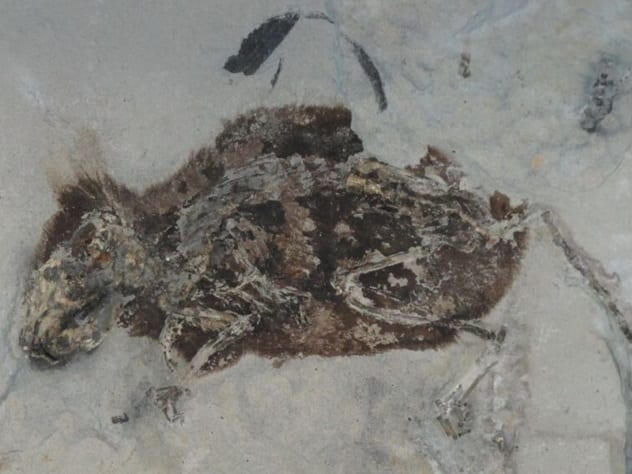
Researchers have made a groundbreaking discovery that is making them see red . . . literally. For the first time ever, scientists have detected traces of red pigment in animal fossils.
The fossils in question are three million years old and belong to Apodemus atavus, an extinct rodent that once roamed the fields of Germany and is related to modern field mice. An international team of paleontologists, chemists, and physicists led by researchers from the University of Manchester devised a method of using X-rays in order to detect red animal pigment.
The team first studied modern animals and determined the elements responsible for the red coloration of bird feathers. They also examined how the chemicals behave under X-rays and discovered that zinc bonding to sulfur in a certain way indicated the presence of pheomelanin, the pigment responsible for red and pink hues. Researchers then applied the same techniques to fossils and found the ever-elusive melanin in the ancient rodent, which scientists have nicknamed “Mighty Mouse.”[9]
1 Cannabis: The Origin Story
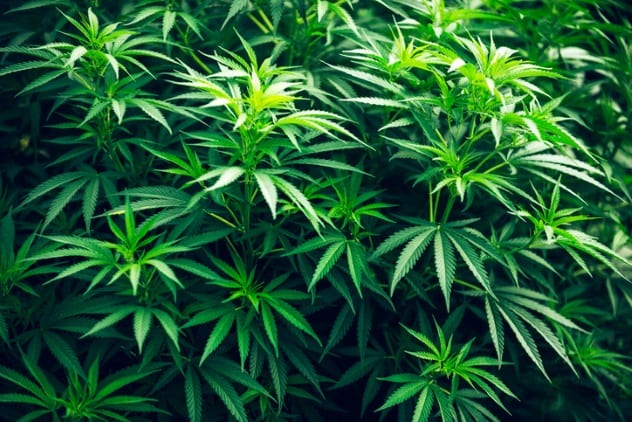
Scientists from the University of Vermont believe they have developed a method which has uncovered the origins of cannabis.
We know that humans have been using cannabis for thousands of years. Besides its main purpose as a drug, the seeds were a good source of protein, while the stem fibers could be turned into textiles. However, we have never been too sure where the plant came from, other than somewhere in Central Asia.
This uncertainty is due to two reasons. There aren’t too many print fossils (impressions made by cannabis leaves on other objects) to study. And although it is possible to analyze ancient pollen, identifying it is problematic. This is because the pollen of cannabis looks almost identical to that of the common hop, another plant in the hemp family whose fruit is the hops used to flavor beer.
A team led by John McPartland searched through previous studies to map out all the sites where ancient cannabis pollen was found. Predictably, they ran into the issue of getting them mixed up with places that had common hop pollen. However, McPartland believes they can differentiate the sites by using “ecological proxies.” In other words, they looked at what other plants were found in the regions. This is useful because cannabis lives in open, grassy steppes, while the common hop is found predominantly in woodlands.
Using this technique, the research team concluded that cannabis likely emerged on the Tibetan Plateau over 3,000 meters (10,000 ft) above sea level, somewhere near Qinghai Lake.[10]
Read more offbeat stories you might have missed from May 18, 2019, and May 11, 2019.








